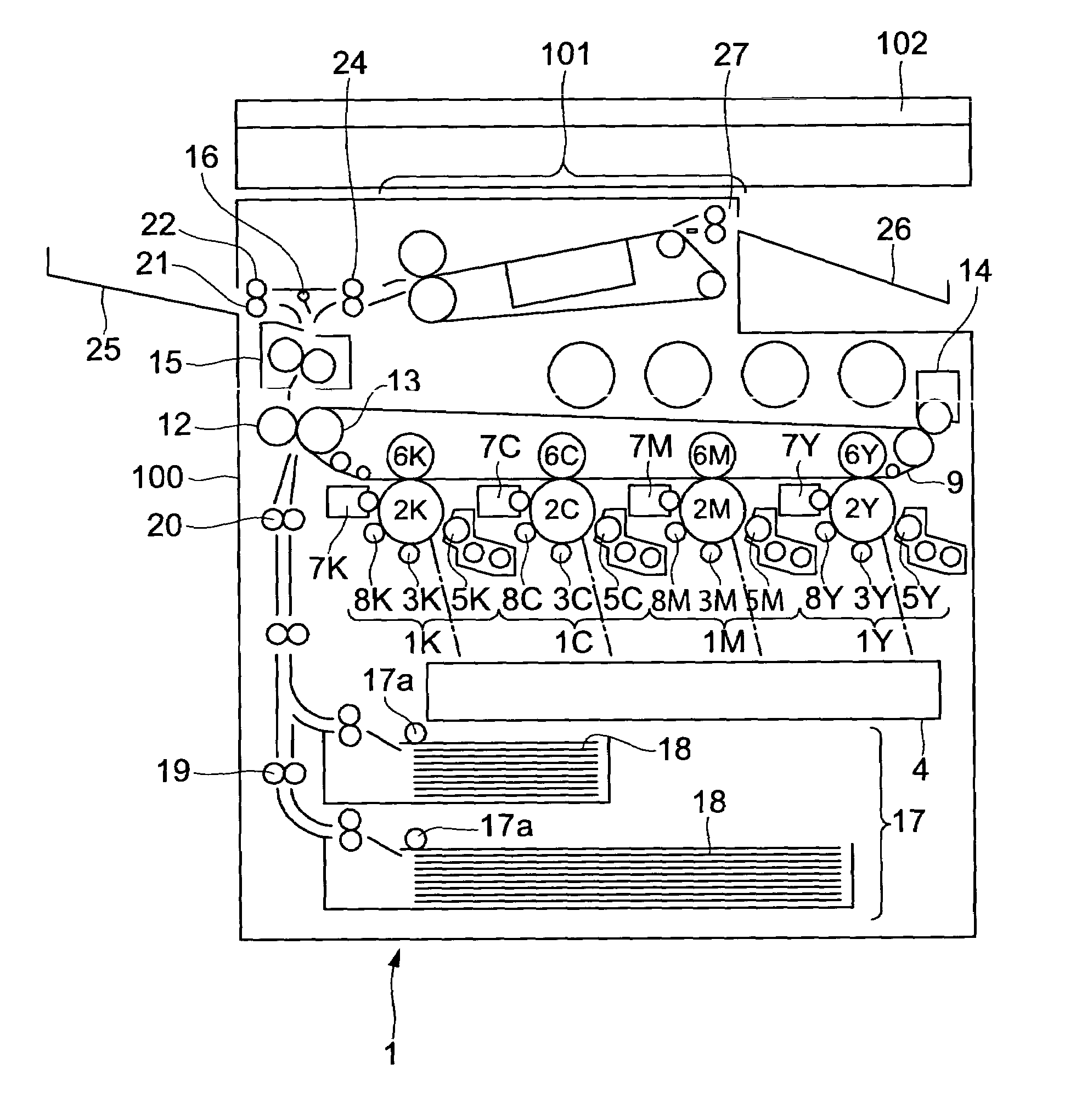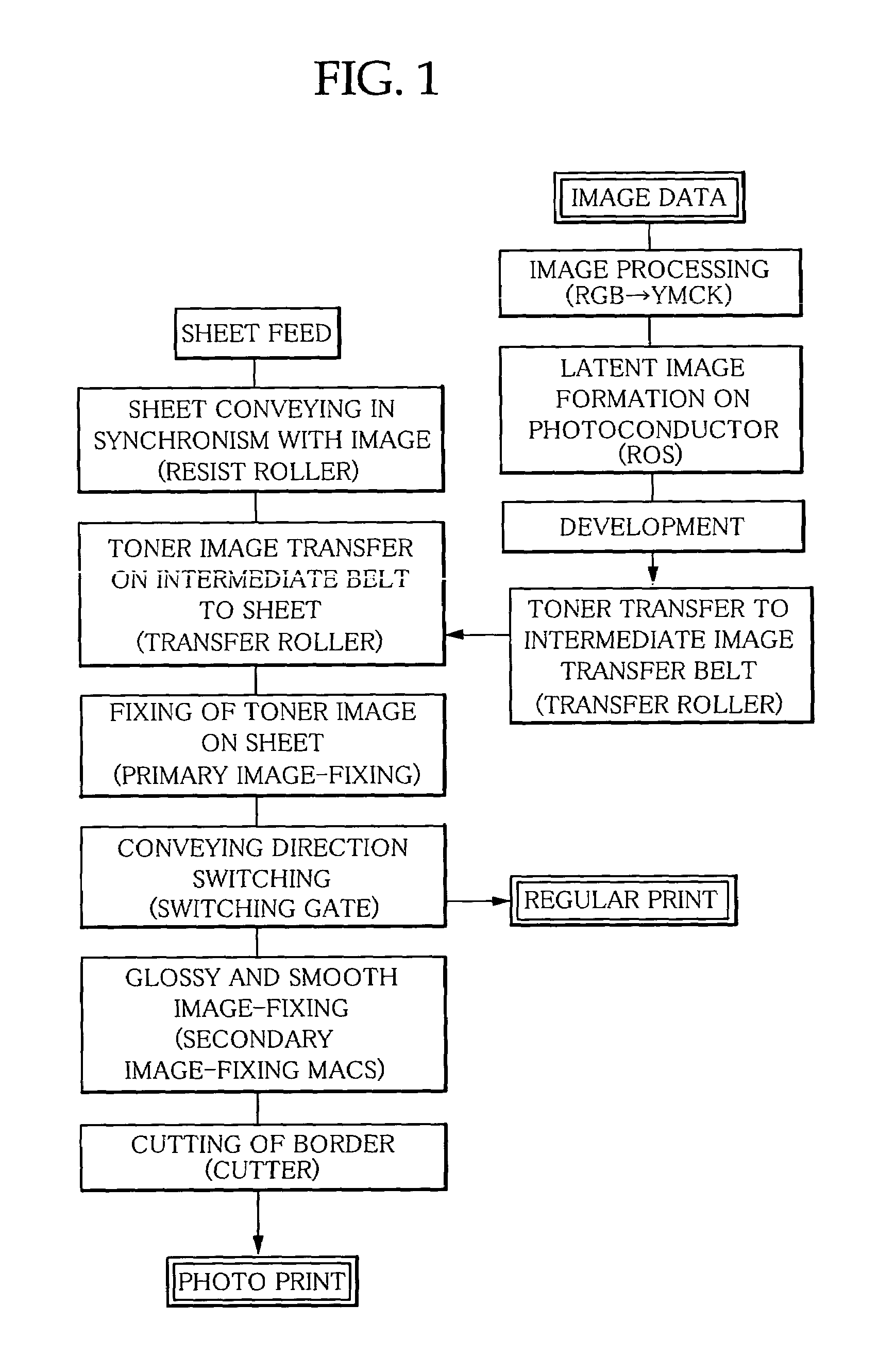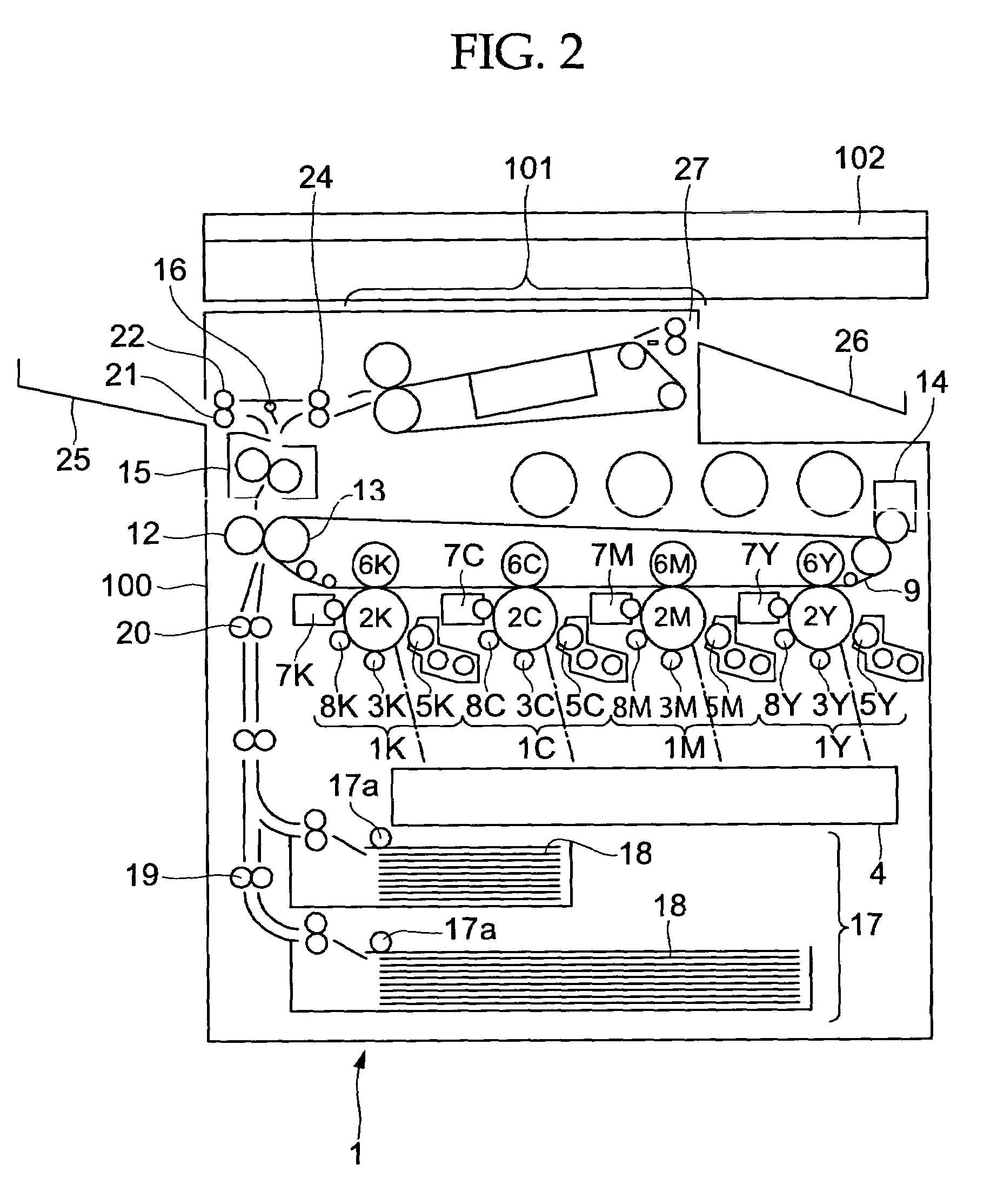Image forming process and image forming apparatus, electrophotographic image-receiving sheet, and electrophotographic print
a technology of image forming and electrophotography, which is applied in the direction of recording equipment, digitally marking record carriers, instruments, etc., can solve the problems of insufficient toner embedded in the electrophotographic image-receiving sheet, inability to significantly reproduce subtle color near black, and inability to employ photography technique, etc., to achieve the effect of preventing adverse effects on other prints, high image quality, and sufficient gloss
- Summary
- Abstract
- Description
- Claims
- Application Information
AI Technical Summary
Benefits of technology
Problems solved by technology
Method used
Image
Examples
example 1
[0408]The above-prepared electrophotographic image-receiving sheet was cut to A6 sized sheets. Using a tandem color printer shown in FIG. 2, (1) a standard portrait image taken with a DSC, (2) a digitally synthesized entirely solid black image, and (3) a digitally synthesized ⅙ gray solid image having a six-step gray gradation from white background to black (FIG. 13) were produced on the electrophotographic image-receiving sheets, respectively.
[0409]Toners obtained by the aggregation process used in a DocuCentre Color 400 (trade name, available from Fuji Xerox Co., Ltd., Japan) were used herein. The volume-average particle diameters and shape factors of these toners are shown in Table 7.
[0410]
TABLE 7Average particle diameter (μm)Shape factorK (black) toner5.51.35Y (yellow) toner5.91.39M (magenta) toner5.31.33C (cyan) toner5.71.37
[0411]The temperatures of the heating roller 40 and the pressure roller 42 in the second image-fixing device 101 as shown in FIG. 8 were set at 135° C. Sepa...
example 2
[0430]An electrophotographic print according to Example 2 was prepared and evaluated by the procedure of Example 1, except that the toners having the following properties in Table 8 were used and that the development conditions were changed so that the black density became about 2.1. The results are shown in Table 10.
[0431]
TABLE 8Average particle diameter (μm)Shape factorK (black) toner7.31.39Y (yellow) toner7.21.41M (magenta) toner7.81.33C (cyan) toner7.71.44
example 3
[0432]An electrophotographic print according to Example 3 was prepared and evaluated by the procedure of Example 1, except that the toners having the following properties in Table 9 were used and that the development conditions were changed so that the black density became about 2.1. The results are shown in Table 10.
[0433]
TABLE 9Average particle diameter (μm)Shape factorK (black) toner5.71.58Y (yellow) toner5.31.61M (magenta) toner5.51.63C (cyan) toner5.61.66
PUM
 Login to View More
Login to View More Abstract
Description
Claims
Application Information
 Login to View More
Login to View More - R&D
- Intellectual Property
- Life Sciences
- Materials
- Tech Scout
- Unparalleled Data Quality
- Higher Quality Content
- 60% Fewer Hallucinations
Browse by: Latest US Patents, China's latest patents, Technical Efficacy Thesaurus, Application Domain, Technology Topic, Popular Technical Reports.
© 2025 PatSnap. All rights reserved.Legal|Privacy policy|Modern Slavery Act Transparency Statement|Sitemap|About US| Contact US: help@patsnap.com



